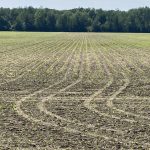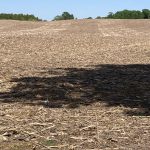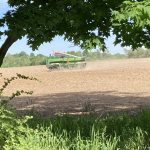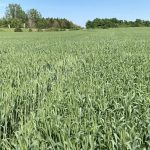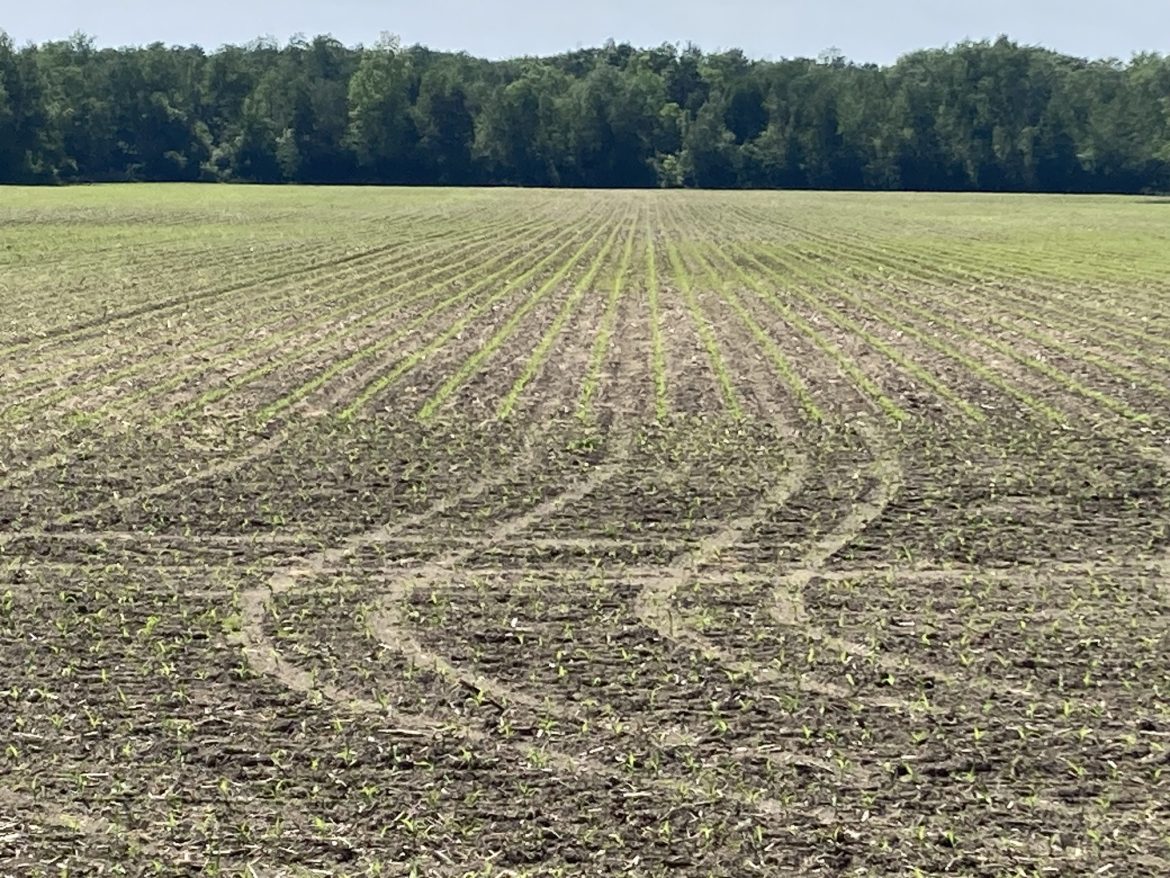
Huron County is the land of corn, soy, and wheat. If city folk wonder where their food staples come from, this is the place. The land here is bountiful, productive, and readily cultivated. It’s as good as it gets in Canada. Drop a nine-furrow plow in the dark soil and you could go for miles without turning up a stone. In this fourth week of May, the fields are awakening. Corn has just been planted and in some fields is already at the two-leaf stage. The fields with last year’s corn stubble are being disced, harrowed and rolled, likely to be planted with soybeans within days. A few have already been planted. Seed heads are emerging in the wheat fields planted last fall, and will be ready for harvest in a couple of months.
I took these photos while cycling along the Orchard Line, which runs a mile in from where our cottage overlooks Lake Huron. The orchards are gone now, including the one my wife’s uncle had at the south end. But the crop fields are still interspersed with woodlots dense with hardwoods, spruce, and cedar. The trees are tall here, too. Those woodlots haven’t been high-graded, at least not lately, nor have they been clear cut, although sadly, they are visibly marked by the skeletal remains of ash trees that fell victim to the emerald ash borer. Pine plantations, elsewhere intended to regenerate forests from abandoned fields, were not needed here and so are rarely seen.
Hundred-year-old maples mark the edge of the Orchard Line. Farmers seem to treasure them: they are quick to replace those that die, and they don’t begrudge the moisture and sunlight that those huge maples take from the first two or three rows of corn adjacent. Yes, there is industrial-scale farming here, but there is also stewardship.
Should the food that comes from these fields be cheap? Not if those who produce it can’t get a reasonable return for their work and risk. Should the grocery chain magnates get less of a share and pay more taxes? Maybe, but that share divided up among all the farmers of the land wouldn’t amount to much. Would “axing” the carbon tax make a difference? Some, no doubt, to the individual farmer, but certainly less than by “axing” all the other costs for equipment and fertilizer and every other input (which nobody proposes to do), along with lower interest rates. But none of that would make food in the grocery store cheaper. Better to ensure that everyone gets a living wage so that we can all afford to buy the food we need.
- Corn has just been planted and in some fields is already at the two-leaf stage; The geometry of planting is clear with the first sprouts
- Last year’s corn stubble, soon to be disced and harrowed for this year’s crop
- Preparing a field for planting
- Seed heads are emerging in the wheat fields planted last fall
- Hundred-year-old maples mark the edge of the Orchard Line
- Skeletal remains of ash trees that fell victim to the emerald ash borer
Springtime in Huron County. All photos by Peter Usher.
